Hi! I’m what you’d call a cube enthusiast. I’ve invested about four years into understanding the best format in all of Magic, especially the process of exploration and iteration. What I mean is, I love to build and refine my cube, which I guess most cube owners do. I’ll be writing about cube theory and practice here, so if that’s an agreeable headspace, welcome.
With that said, Throne of Eldraine looks excellent for cube owners. It’s full of new and unique cards; many of them are strong enough to be meaningful—without being too dominant—inclusions for every power level, or environment. I will be evaluating the cards which I believe will, or at least should, be tested and/or included in everything from Vintage all the way down to Peasant cubes.
Some of these cards will become cube staples. Others may find themselves fulfilling more niche roles, freshening up a sometimes-tired assortment of threats and answers. Others will fade, or fail. Whatever your cube environment may be, I think new cards are always a good opportunity for discussion, and I’m looking forward to exploring Throne of Eldraine’s impact on our cubes.
I will break down my card evaluations by addressing their relevance to most of the ‘styles’ of cube:
- High Power – This can refer to anything from fully powered Vintage cube to most Legacy environments. Your environment exploits cards like Sneak Attack, Opposition, Upheaval, Gaea’s Cradle, and Balance.
- Low Power – This can refer to some Legacy environments, but is probably closer to a Modern Magic power level. Many of these cubes are centered around creatures and planeswalkers, or sweet build-arounds.
- Peasant – This is for any cube which only plays commons and uncommons. This can also be relevant to Pauper cubes.
While I might not address your particular environment, I think these styles are delineated well enough that you should be able to take away something that applies to you.
We’re in the home stretch now. If you’ve been reading this since the first article, thanks for sticking with me! (Read the White, Blue, Black, Red, and Green reviews.)
Okay, without further ado!
The Royal Scions
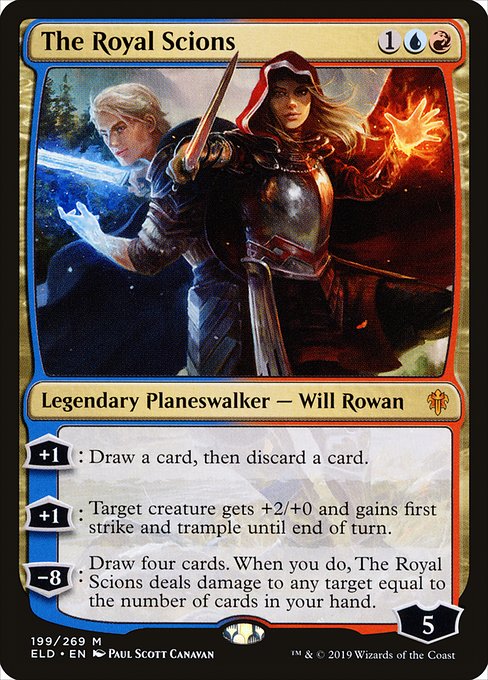
It’s hard to compete with the Izzet slots in almost any cube: we have an overabundance of choices across multiple strategies. Whether you’re goal is storming off with Goblin Electromancer and Thousand-Year Storm, stealing some artifacts with Dack Fayden, or valuing people right out of the game with Expansion // Explosion and Electrolyze; Izzet’s got you covered. So when the new kids stroll onto the scene, they’d better have an excellent reason to join the party.
Yes, it’s another three mana planeswalker with tons of loyalty; so it’s gotta fit in somewhere, right? This looks like an incremental advantage card—one that helps your evasive creatures hit a little harder or loot away those excess lands to dig for more action. It’s a perfect fit into the Splinter Twin decks (not that this archetype needs bolstering at all) or aggressive/tempo strategies. I don’t, however, like this in hard control decks or big mana decks as the Royal Scions is utterly incapable of protecting itself save for its high loyalty.
Test this in Low/Modern power level environments. While this card is indeed powerful, I think the bar is simply too great for High Power environments to include The Royal Scions. Dack Fayden is better in basically every way once you get up to Legacy and Vintage.
Garruk, Cursed Huntsman
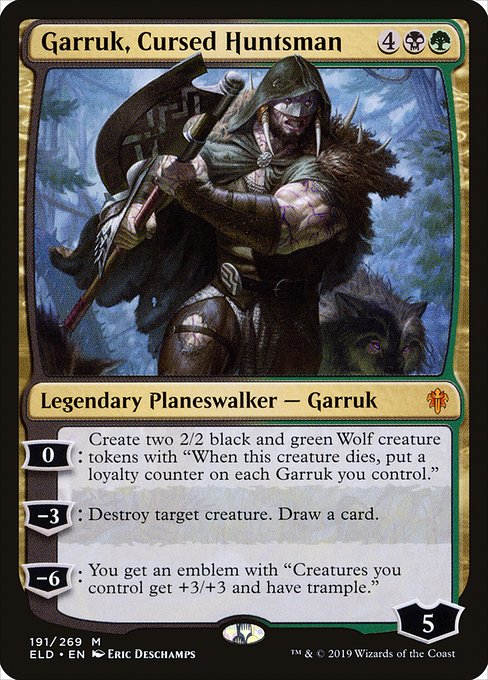
Another Black-Green midrangey planeswalker, eh? Previously we’ve seen Garruk, Apex Predator and Vraska, Relic Seeker in these high-mana slots for Golgari, so let’s compare them.
The Apex predator used to be, and sometimes still is, the biggest and baddest of Garruks in Cube. He protects himself from both creatures and planeswalkers, and is capable of winning the game on his own thanks to his beast-making ability and/or his ultimate. Vraska, Relic Seeker also protects herself from creatures, but has the additional bonus of blowing up opposing artifacts and enchantments and making a Lotus Petal . . . er, Treaure token. She can also win the game outright with her pirate army and ultimate.
Garruk, Cursed Huntsman provides us with less utility than either of these previous inclusions for cube. Sure, he can make a wide army of wolves, and protects himself against creatures. But he can’t directly interact with any other permanent type. And that’s a big strike against him. I think for your money Garruk is a fine option, but not a great one. Unless you plan on running a Modern Power level, planeswalker heavy environment, Garruk just doesn’t get there for me.
Oko, Thief of Crowns
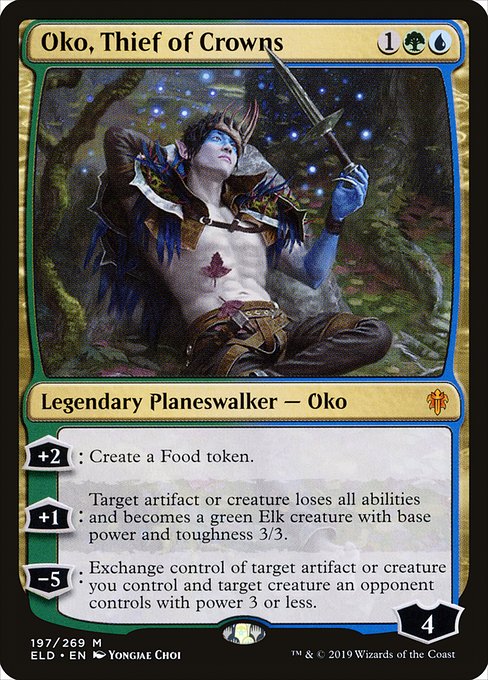
Oko, Thief of Crowns is really something else. He might be one of the most powerful planeswalkers ever printed. Unless you’ve been living under a rock for the last couple of months, Oko is everywhere in constructed Magic. For us cubers, that’s not exactly relevant—but if anyone has had a chance to test this card in literally any cube that will allow it, you know this card will definitely be a staple going forward.
I’m not sure how much I need to say about Oko that hasn’t already been said. When he comes down early—as early as turn 2!—he will almost singlehandedly dominate a game. Turning your opponents’ mana rocks into Elks is hilarious, and swapping your food token for your opponents titan feels evil. Later on, as a topdeck, Oko can neutralize your opponents best creature or artifact, then provide you with a steady stream of either life or 3/3s.
Oko is an excellent inclusion all the way up to fully powered Vintage environments, and I suspect he will be for a long time. Remember when we used to complain about Simic not having enough good cards? Between Oko, Thief of Crowns and Hydroid Krasis, I think we’ve got a winning guild for 2019.
Yeah, okay—it’s a windmill slam everywhere that will allow it. Don’t believe me? Wait until you get to cast it this month in the Holiday cube and then get back to me.
Outlaws’ Merriment
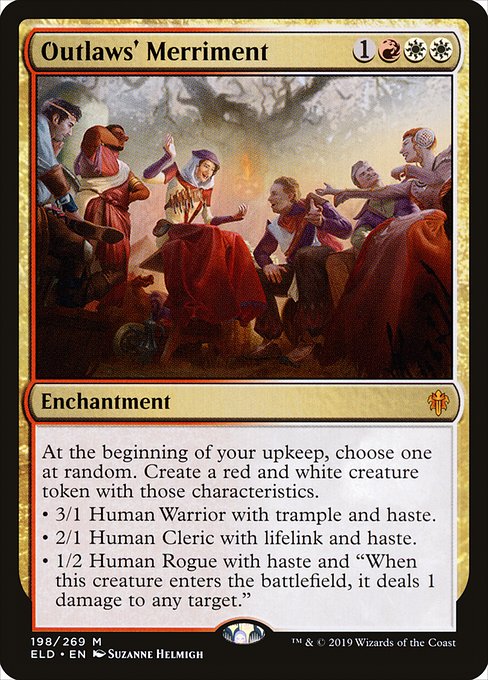
A cheaper yet harder to cast, sort-of new take on Assemble the Legion. Boros’s new token maker dominates Eldraine limited. For cube, I imagine it being playable in a Modern power-level environment. It exists in a unique place: if you’re aggressive and can cast it on curve, spending turn four to do nothing doesn’t sound like a winning play. If you’re a control deck, it doesn’t have the same overwhelming feeling that Assemble presents, even when potentially coming down a turn earlier. Wouldn’t both of these decks rather have planeswalkers like Ajani Vengeant or Nahiri, the Harbinger?
If you don’t like playing with planeswalkers and have a power level low enough, Outlaws’ Merriment is certainly playable. Especially in a dedicated tokens strategy. Anything else, however, and it’s simply too slow, as there are better options for us to Boros with.
Escape to the Wilds
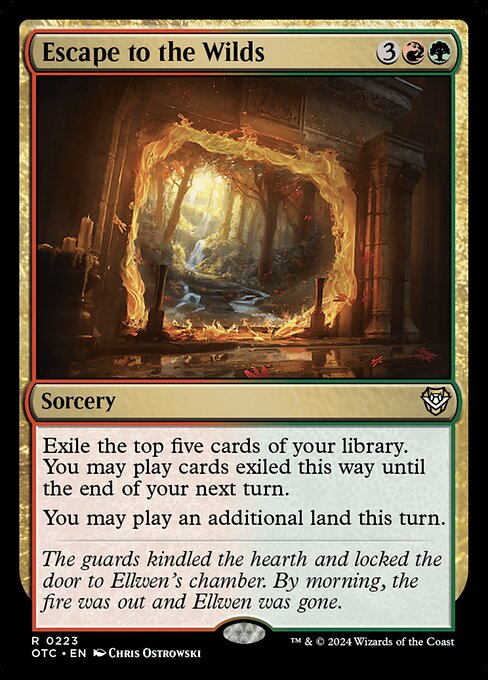
Escape to the Wilds is exciting. A massive Light up the Stage that can score you an additional land drop is exactly what a ramp deck wants in lieu of an actual payoff—similar to cards like Harmonize, but pay an additional mana and you get to look at two additional cards. It’s very splashable in Green-based decks; I’ve already witnessed it keeping a Green mage in the game against another midrange deck (me) in the MTGO Legacy cube more than once, and was always impressed.
I like it most in more ramp-focused decks, as you usually have enough resources to take advantage of hitting multiple high cost spells; but I can also see this being played in an aggressive deck at the top of the curve looking to hit that last burn spell or couple of threats.
This effect doesn’t come around all that often, and I think this is an excellent exploration of the design space for Gruul. I’d test this in any cube that will allow it. It’s possible this could be strong enough for Vintage cube, too, so i’ll be looking for it when the Holiday cube goes online.
Lochmere Serpent
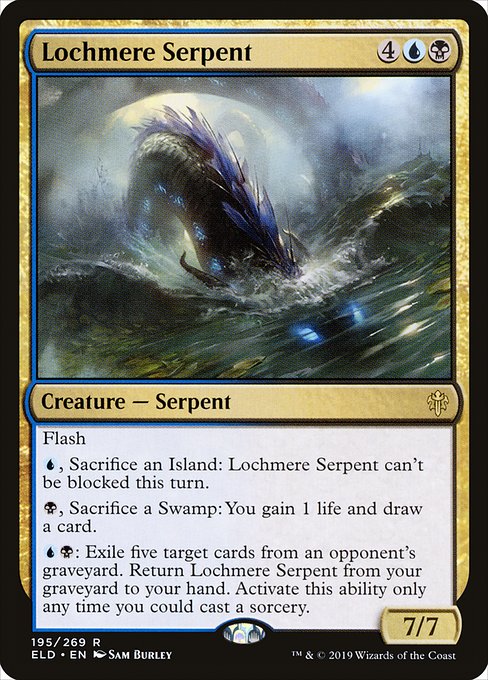
Dimir isn’t exactly wanting for win conditions in cube. But if cards like The Scarab God aren’t exactly your bag, then Lochmere Serpent gives us another, albeit much lower power level threat.
Similar to Aetherling, the Kraken can singlehandledly win you the game regardless of the board state. Well, provided you have some islands lying around I guess, but that shouldn’t be too much of a problem. That it comes down at instant speed to ambush an attacker is super powerful, but give me a little card draw and the ability to buy back the Serpent later in the game and i’m convinced this card is good enough for a Modern power level cube.
I’d advise against playing Lochmere Serpent in Legacy or Vintage cube, but i’m excited to have a new finisher for my control decks.
Arcanist’s Owl
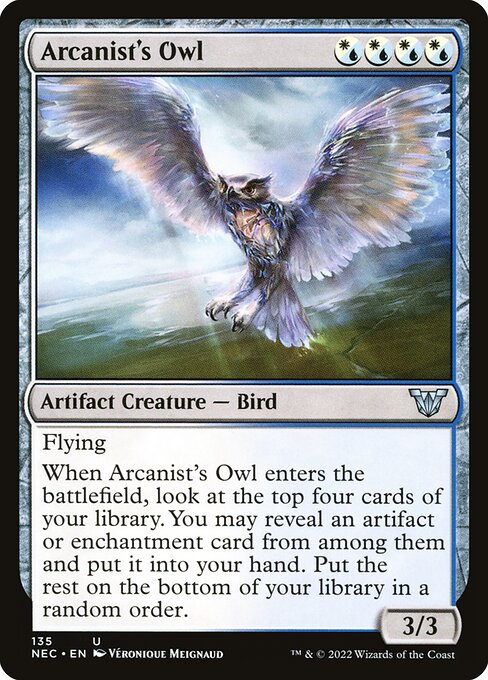
When evaluating these quad-hybrid cards, it’s important to understand that you have to be exactly Azorius to cast it. Unless you’re supporting mono-color decks, of course. These are not splashable cards, and in particular Arcanist’s Owl also requires the right environment to get its value.
I can see this in a Peasant cube that heavily supports artifacts and enchantments matter as an archetype. I don’t know if this is something that’s been tried already. The cognescenti of these formats can tell me if this has ever been a thing. If so, the Owl looks like it could be a great fit.
Covetous Urge
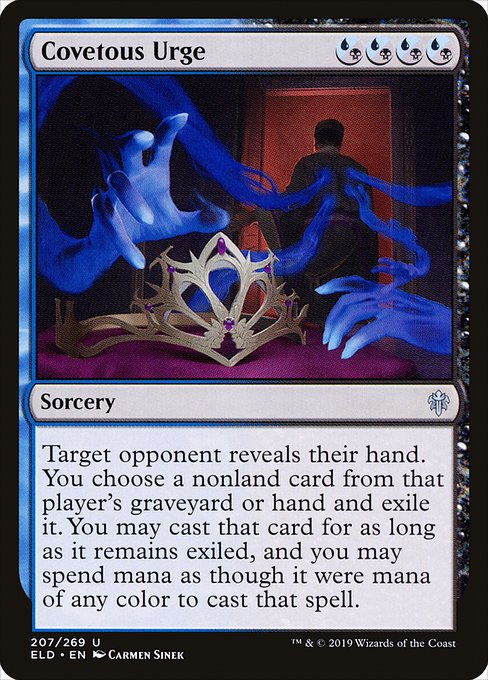
We’ve seen cards like this in the past, in Psychic Intrusion and Memory Plunder. Covetous Urge is the best of both of these worlds, and then some. This is never a dead draw provided you can cast it, as it can even take the opponents best spell in their graveyard! Combine this with the ability to rebuy Covetous Urge from the graveyard with Mnemonic Wall, Mystic Sanctuary, or Mystic Retrieval and you’ve got plan. A slow one, but a powerful one.
I’d love to see this in Peasant cubes, and I’m going to test it in my Low Power format. It could be too slow, but I want to be proven wrong first.
Drown in the Loch
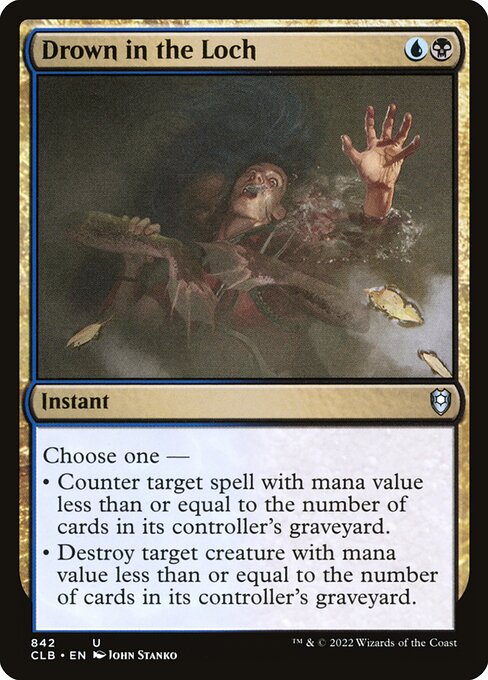
While Drown in the Loch might be great in certain constructed formats, it takes far too much work to get this card online, and for a mediocre result. Much of cube involves being able to get on board or interact on curve. Drown is asking you to wait until the mid-to-very late game to make this card simply playable. I’d avoid testing this in any format outside of a Low Power format with a dedicated mill theme. And even then, I don’t care for mill in cube, so this is a hard pass.
Improbable Alliance
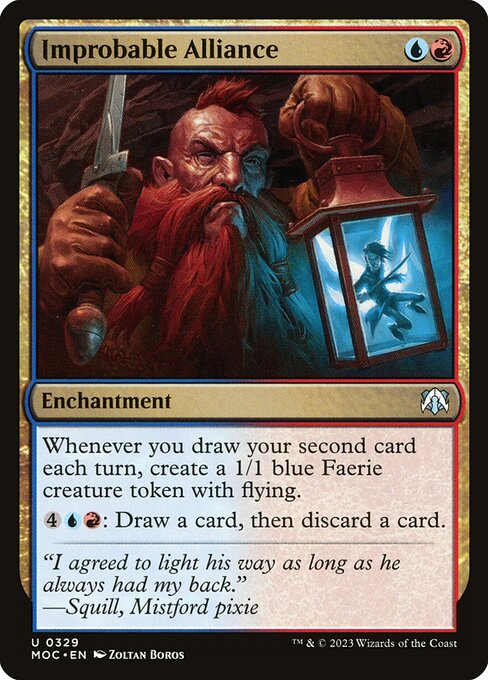
Helloooooo, build around! Improbable Alliance is exciting for a Peasant environment. We’ve gotten a healthy amount of Draw Two or Draw an Extra Card themed stuff for Izzet this year, and Alliance gives us both an engine and a payoff. I’m probably selling my alliance to Izzet a little too much here, but i’d be remiss if I didn’t at least pledge my love for drawing cards like the old school Magic player I am.
I love seeing this Draw an Extra Card theme come up in 2019. Many of our engines and payoffs allow us to play to the board instead of keeping it in our hand. Improbable Alliance is an exemplary design for this space.
Loch Dragon
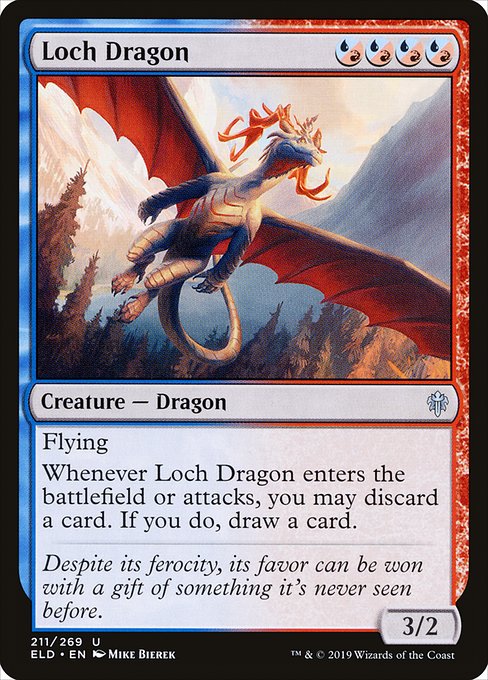
My third and final quad-hybrid uncommon is my new favorite Izzet looter. Four mana for a 3/2 flying creature isn’t anything exciting, but the chance for repeatable looting—both immediate and whenever you get to attack—turns this beater into a powerhouse. Loch Dragon may be easy to kill but you’ll always get your money when it resolves; so you’re never totally devastated when it dies before you untap.
This can be a high synergy card for Izzet decks, but it’s also just a fine threat provided you can cast it. I’d be happy to run this in a Peasant environment, and i’m also testing it in my Low Power cube.
Stonecoil Serpent
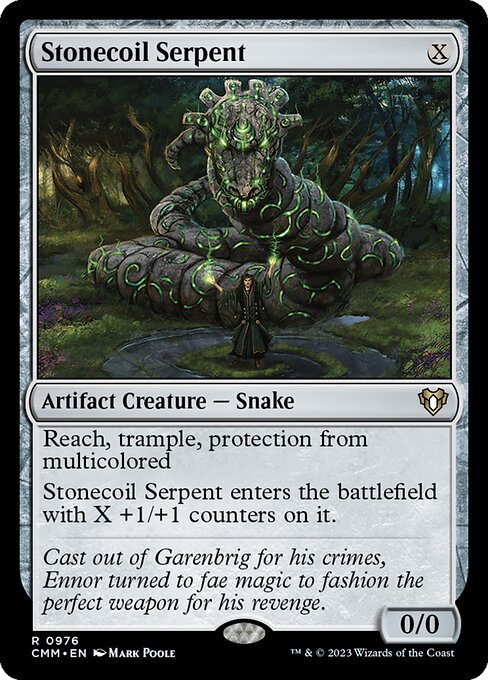
Another scalable, first-pickable Artifact creature that keeps you open? Yep. Stonecoil Serpent isn’t the most interesting card, but it’s better than Endless One and is a bit of a stat monster. Reach, Trample, and Pro-Multicolored means you’ll sometimes put your opponents on tilt when they blindly attack with their Thief of Sanity. (This hasn’t happened to me or anything.)
This card is totally fine for a creature-based, Modern power-level environment. They’re playable in nearly any deck and, because of trample, can be a great ramp payoff. Don’t get me wrong: It’s good. It’s powerful. It just doesn’t excite me.
Heraldic Banner
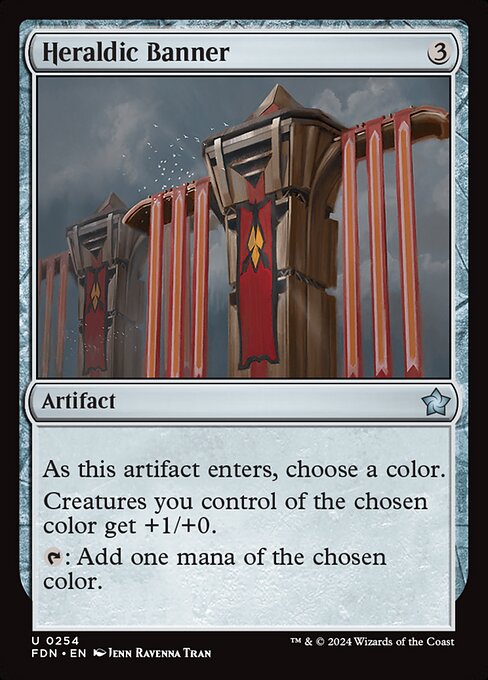
Mana rocks in Peasant cubes have to be a bit more dynamic at the three-drop slot than simply adding mana or color fixing. Worn Powerstone adds two mana, and Unstable Obelisk can be used later to blow something up. Heraldic Banner gives us an anthem, but only for creatures of a single color on your side. In a two color deck, this might not even be half of your creatures. I like the idea of this card, but only for mono, or mostly mono-colored decks. And only for Peasant cube.
Gingerbrute
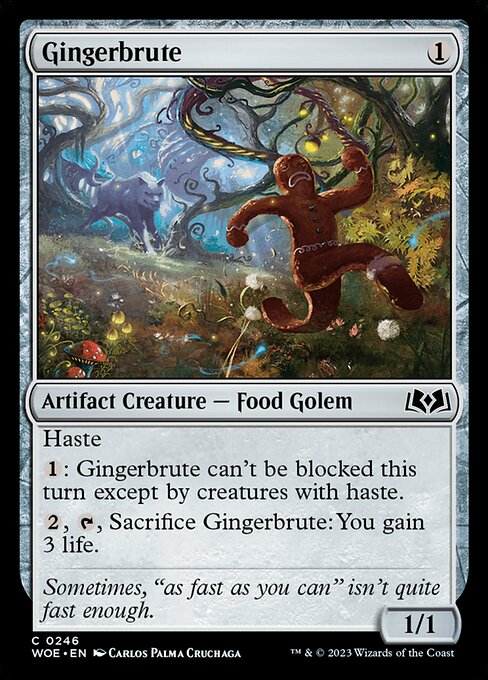
For Peasant cubes, Gingerbrute presents a fun and interesting evasive one-drop. The cookie carries equipment well, and can bolster artifact synergies. And if you’re behind, Gingerbrute can buy you a turn with a chump block + gain three life. You’ll know if your environment supports this card.
The Castles
The castles are all playable in the right environment. They vary greatly in power level, however, so don’t just go adding them all to your format without consideration first.

Castle Ardenvale is one of the better ones. It immediately brings to mind Legion’s Landing flipped state Adanto, the First Fort. Instead of working for the transformation of Landing, you get the land straight up. However, the activation is more expensive and you get a human instead of a lifelinking vampire. I’d rather have Legion’s Landing if I had the choice, unless I had a human synergy I could exploit.
This card is slow, but playable in a Low Power level environment. Five mana is a lot for a 1/1 human, but good mana sinks are always worth consideration in heavy White decks.
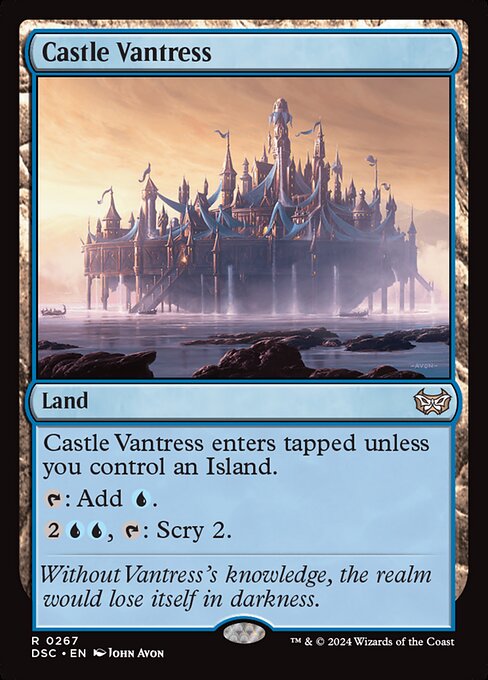
Castle Vantress is very powerful. Often, in heavy Blue decks with lots of reactive disruption, you want to be able to punish your opponent for not playing into your open mana. With this card in play you get a repeatable Scry 2 at a very minimal cost, which can be exactly what you might need to take over the late game. This pairs excellently with countermagic and removal, and as such is perfect for controlling Blue decks.
I think most Low/Modern power level cubes will be happy to run this in a mono-color land slot over something like a Memorial to Genius.
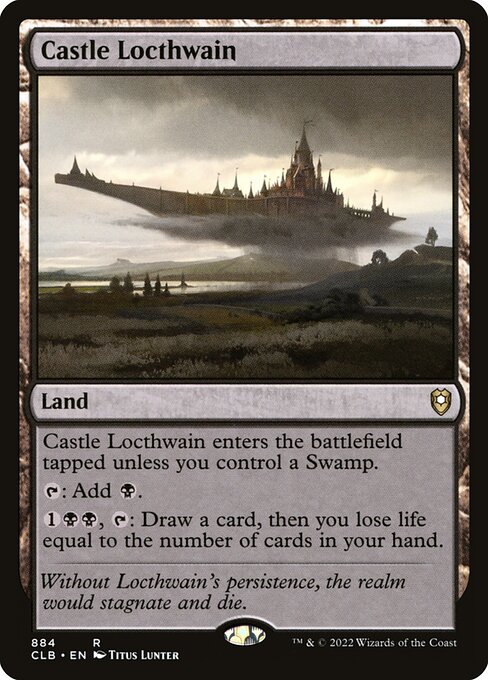
Castle Locthwain has serious potential. Anytime you put Draw a Card on a land, you’ve got my attention. The best case scenario lets us envision being hellbent, drawing a card and losing only a single point of life. While that sounds incredible, it’s far from the average case with this card. In a slow, grindy matchup this card can do work in a Dimir control deck, or even a Mono Black Devotion deck. Otherwise, you’re looking at a land with next to no text that can sometimes even be a liability. If the cost to put this in your deck wasn’t so low, i’d say this is a great sideboard card.
Test this in Low/Modern power level cubes. At higher power levels the effect is simply too slow.

Now we’re talking. Castle Embereth is great for Mono Red. And if your environment supports tokens, this card is incredible. In a two color deck that wants to curve out this can be dangerous to run, as you don’t want ETB tapped lands in those archetypes. However, the upside is high enough that i’d say it’s worth the risk. Aggressive decks love mana sinks, and Castle Embereth provides us with an excellent opportunity to do so.
Test this in everything up to Legacy cube.
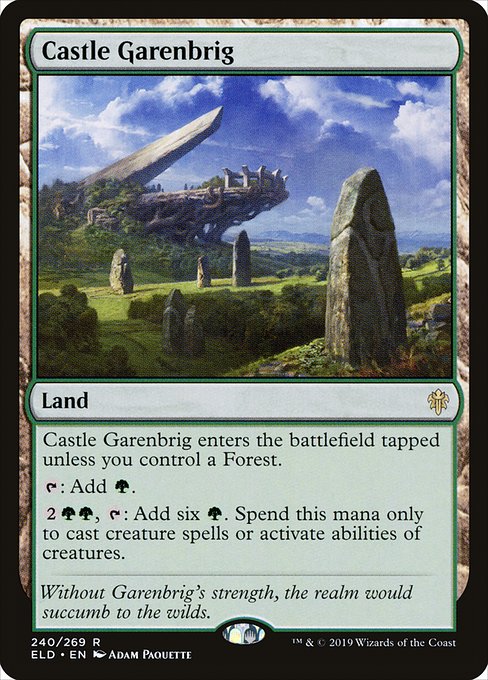
The last castle, Castle Garenbrig, is exciting for heavy Green decks. Ramp on a land, even with some restriction and one for an additional one mana, is priceless for any deck looking to power out big monsters. It’s not trivial to get to six mana a turn sooner. That’s the sweet spot for cards like Primeval Titan! What this card doesn’t do is help cast cards like Genesis Wave or planeswalkers. That’s an understandable drawback, but one that shouldn’t dissuade you from running this in every environment that can support it, possibly even for High Power Legacy formats.
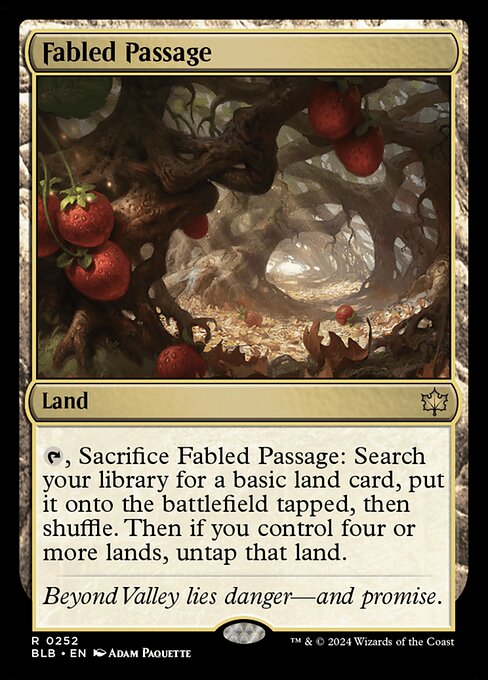
No, this isn’t a fetch land. It’s closer to Evolving Wilds; and most of the time, Fabled Passage is no different. When you have four lands on the battlefield, however, suddenly this becomes Prismatic Vista. So i’d call this strictly better than our old friends Evolving Wilds and Terramorphic Expanse, which is reason enough to run it in any environment that wants these lands for fixing/shuffle effects.
This card is solid, but unexciting. I’m happy it exists, and it will be a cube staple going forward.
Power Rankings—Multicolor & Colorless
High Power
Low Power
Peasant
Aside from “The Mythic on the Box” in Oko, High Powered cubes didn’t get a lot. And neither did Peasant cubes. It’s the Low Power formats that seem to be benefiting the most here, for me. And without any Adventure Creatures worthy enough to mention (and only one, really) we kind of miss out in the gold section. Even the quad-hybrid cards aren’t slam dunks. As an ending for my Throne of Eldraine Cube Reviews, this is hardly a climactic finish.
Thanks so much for sticking with me through all this consideration and exploration. Join me next week where I break down a recent draft of my cube, complete with decklists and feedback for how to continue tinkering with your environment.

